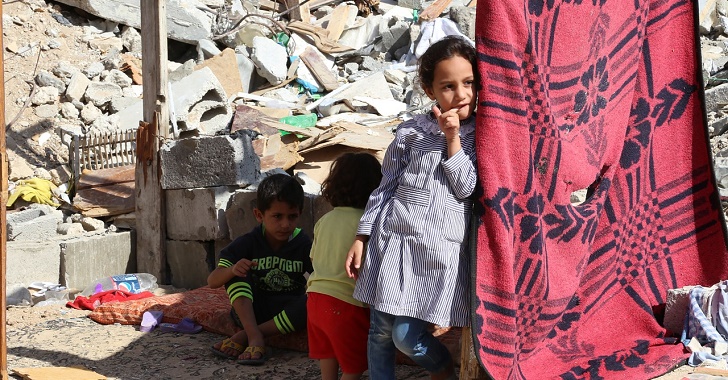New Report Says Gaza Could Be Uninhabitable Within 5 Years
As if mass unemployment, poverty, and a blockade that pens almost two million people into 160 square kilometer open prison weren’t bad enough, a U.N. report has said that Gaza could become uninhabitable by 2020.
Surrounded by Egypt to the south, Israel to the north and east, and Israeli gunships to the West (that regularly open fire on Gaza fisherman), 1.8 million Palestinians live in the restricted enclave — a number predicted to rise to 2.1 million by 2020.
According to the report, Israel’s three military operations in the last six years and the eight-year economic blockade have ravaged Gaza’s infrastructure, shattered its production base, and prevented meaningful reconstruction and economic recovery.
Using the term “de-development” to describe a process where development is not only hindered but reversed, the report cites last year’s Operation Protective Edge:
The most recent military operation compounded already dire socioeconomic conditions and accelerated de-development in the Occupied Palestinian Territory, a process by which development is not merely hindered but reversed.
The 50-day offensive last July/August killed over 2,200 Palestinians — including over 500 children — and sent the Palestinian economy into its first recession since 2006. Hundreds of Palestinians lost homes, limbs, and family members during Israeli airstrikes and artillery fire. Thousands remain displaced after the bombardment.
Aside from the military operations, the report claims the blockade had already led to large-scale cessation of production and loss of employment. It describes the destruction of Gaza’s local economy and productive assets and infrastructure, including numerous industrial, agricultural, commercial, and residential facilities.
Gaza has the highest unemployment rate in the world, standing at 43%, and the report predicts that if current economic and population  trends continue, the region will hit a crisis point in 2020. Highlighting the crisis faced in relation to water and electricity, the U.N. claims that Gaza’s reliance on coastal aquifers as the only source of fresh water means that 95% of water is not fit to drink.
trends continue, the region will hit a crisis point in 2020. Highlighting the crisis faced in relation to water and electricity, the U.N. claims that Gaza’s reliance on coastal aquifers as the only source of fresh water means that 95% of water is not fit to drink.
The latest report’s claims of Gaza’s bleak prospects echoed similar warnings released in a World Bank report in May that estimated Gaza’s GDP would have been four times higher if it hadn’t been for the conflicts and multiple restrictions.
“Most of Gaza’s 1.8 million residents are confined to an area of 160 square kilometers and are not able to travel beyond this area without permits. According to the Washington-based Center for Mind-Body-Medicine, as many as one third of Gaza’s children showed signs of post-traumatic stress disorder even before the 2014 armed conflict, now even more,” said Steen Lau Jorgensen, World Bank Director for the West Bank and Gaza.
The World Bank report also claims the status quo in Gaza is unsustainable. It states that recovery of the impoverished region will be dependent on donor financing, easing of the blockade to allow reconstruction materials in and exports out, and effective governance systems under Palestinian Authority leadership.
Also See:
Michaela Whitton and theAntiMedia.org. Anti-Media Radio airs weeknights at 11pm Eastern/8pm Pacific. If you spot a typo, email [email protected].
Michaela Whitton joined Anti-Media as its first journalist abroad in May of 2015. Her topics of interest include human rights, conflict, the Middle East, Palestine, and Israel. Born and residing in the United Kingdom, she is also a photographer. Learn more about Whitton here!




